One Origin of Digital Humanities Fr Roberto Busa in His Own Words
Julianne Nyhan
Visit to download the full and correct content document: https://textbookfull.com/product/one-origin-of-digital-humanities-fr-roberto-busa-in-hisown-words-julianne-nyhan/

More products digital (pdf, epub, mobi) instant download maybe you interests ...
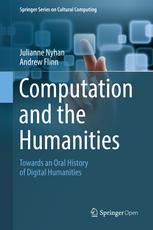
Computation and the Humanities Towards an Oral History of Digital Humanities 1st Edition Julianne Nyhan
https://textbookfull.com/product/computation-and-the-humanitiestowards-an-oral-history-of-digital-humanities-1st-editionjulianne-nyhan/
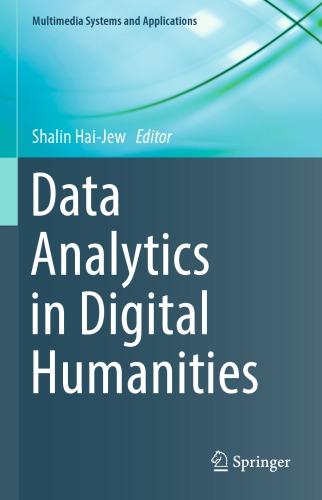
Data Analytics in Digital Humanities Hai-Jew
https://textbookfull.com/product/data-analytics-in-digitalhumanities-hai-jew/
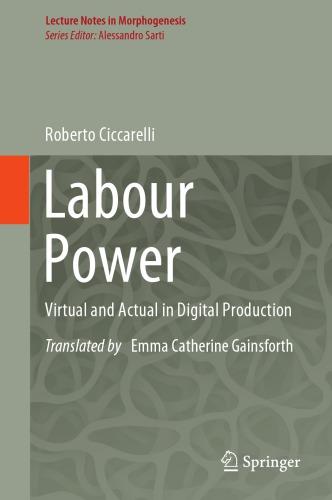
Labour Power Virtual And Actual In Digital Production
Roberto Ciccarelli
https://textbookfull.com/product/labour-power-virtual-and-actualin-digital-production-roberto-ciccarelli/

New Digital Worlds Postcolonial Digital Humanities in Theory Praxis and Pedagogy Roopika Risam
https://textbookfull.com/product/new-digital-worlds-postcolonialdigital-humanities-in-theory-praxis-and-pedagogy-roopika-risam/
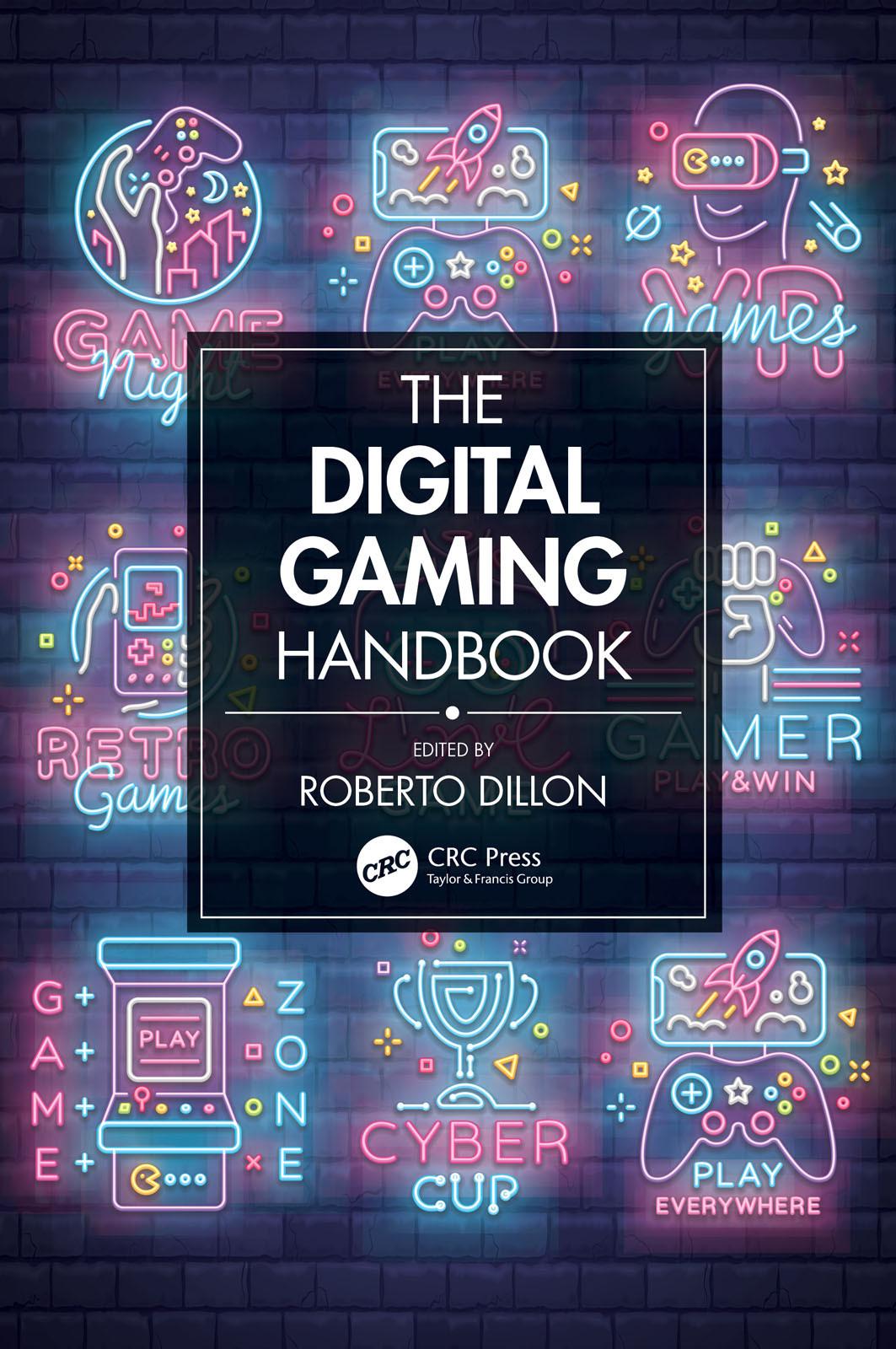
The Digital Gaming Handbook 1st Edition Roberto Dillon
https://textbookfull.com/product/the-digital-gaming-handbook-1stedition-roberto-dillon/
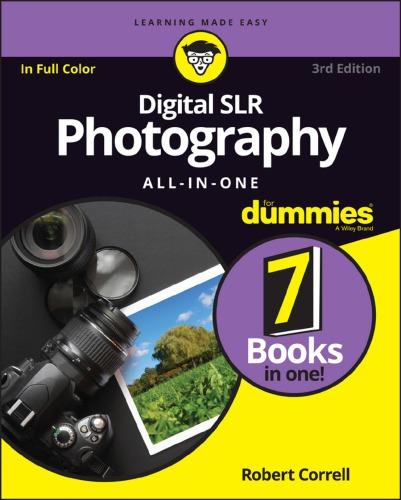
Digital SLR photography all-in-one Correll
https://textbookfull.com/product/digital-slr-photography-all-inone-correll/
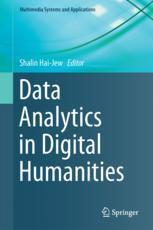
Data Analytics in Digital Humanities 1st Edition Shalin Hai-Jew (Eds.)
https://textbookfull.com/product/data-analytics-in-digitalhumanities-1st-edition-shalin-hai-jew-eds/
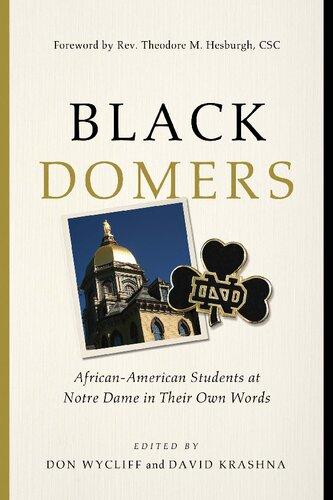
Black Domers African American Students at Notre Dame in Their Own Words 2nd Edition Don Wycliff
https://textbookfull.com/product/black-domers-african-americanstudents-at-notre-dame-in-their-own-words-2nd-edition-donwycliff/

The Digital Gaming Handbook 1st Edition Dr. Roberto
Dillon
https://textbookfull.com/product/the-digital-gaming-handbook-1stedition-dr-roberto-dillon/
Julianne Nyhan Marco Passarotti Editors
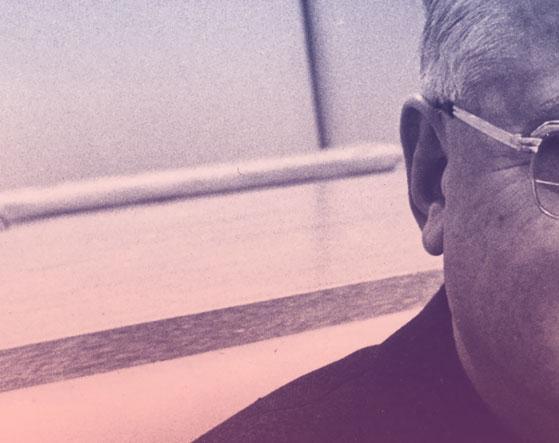


One Origin of Digital Humanities
Fr Roberto Busa in His Own Words
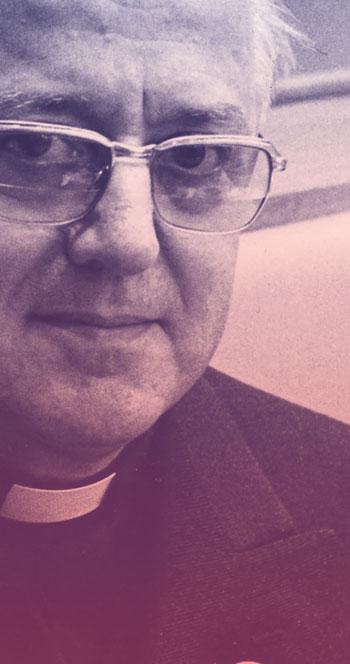

OneOriginofDigitalHumanities
JulianneNyhan • MarcoPassarotti
Editors
OneOriginofDigital Humanities
FrRobertoBusainHisOwnWords
ForewordbyStevenE.Jones
123
Editors
JulianneNyhan
UniversityCollegeLondon(UCL) London,UK
MarcoPassarotti Università CattolicadelSacroCuore Milan,Italy
TranslatedbyPhilipBarras,AndreiaCarvalho,andTessaHauswedell
ISBN978-3-030-18311-0ISBN978-3-030-18313-4(eBook) https://doi.org/10.1007/978-3-030-18313-4
© SpringerNatureSwitzerlandAG2019
Thisworkissubjecttocopyright.AllrightsarereservedbythePublisher,whetherthewholeorpart ofthematerialisconcerned,specificallytherightsoftranslation,reprinting,reuseofillustrations, recitation,broadcasting,reproductiononmicrofilmsorinanyotherphysicalway,andtransmission orinformationstorageandretrieval,electronicadaptation,computersoftware,orbysimilarordissimilar methodologynowknownorhereafterdeveloped.
Theuseofgeneraldescriptivenames,registerednames,trademarks,servicemarks,etc.inthis publicationdoesnotimply,evenintheabsenceofaspecificstatement,thatsuchnamesareexemptfrom therelevantprotectivelawsandregulationsandthereforefreeforgeneraluse.
Thepublisher,theauthorsandtheeditorsaresafetoassumethattheadviceandinformationinthis bookarebelievedtobetrueandaccurateatthedateofpublication.Neitherthepublishernorthe authorsortheeditorsgiveawarranty,expressedorimplied,withrespecttothematerialcontained hereinorforanyerrorsoromissionsthatmayhavebeenmade.Thepublisherremainsneutralwithregard tojurisdictionalclaimsinpublishedmapsandinstitutionalaffiliations.
TypesetbyServisFilmsettingLtd,Cheshire
ThisSpringerimprintispublishedbytheregisteredcompanySpringerNatureSwitzerlandAG Theregisteredcompanyaddressis:Gewerbestrasse11,6330Cham,Switzerland
For Reimar, Joey, Clara, Iris, John and Eileen and for Nina, Ilde, Maria Assunta, Carlo and Alice
Chapter 1 Introduction, or Why Busa Still Matters. Marco Passarotti and Julianne Nyhan .......................................................................................................
Chapter 2 A First Example of Word Index Automatically Compiled and Printed by IBM Punched Card Machines. Roberto Busa S.J. ...........................................
Chapter 3 The Use of Punched Cards in Linguistic Analysis. Roberto Busa S.J.
Chapter 4 The Main Problems of the Automation of Written Language. Roberto Busa S.J. ...............................................................................................................
Chapter 5 The Work of the “Centro per l’Automazione dell’Analisi Letteraria” in Gallarate, Italy. Roberto Busa S.J. ................................................................... 69
Chapter 6 Linguistic Analysis in the Global Evolution of Information. Roberto Busa S.J. ...............................................................................................................
Chapter 7 Latin as a Suitable Computer Language for Science. Roberto Busa S.J. ...............................................................................................................
Chapter 8 Cybernetics and the Possibilities of a New Human Being. Roberto Busa S.J. ...............................................................................................................
Chapter 9 Experienced-Based Results with Preparations for the Use of Automatic Calculation in Biology. Roberto Busa S.J. .......................................
List of Figures ....................................................................................................... ix List of Tables ......................................................................................................... xi Foreword
xiii Preface
xix
Table of Contents
.............................................................................................................
and Acknowledgements ..........................................................................
1
19
............................................................................................................... 39
59
75
87
93
105 vii About the
xxv
editors ................................................................................................
Chapter 10 The Function and Use of an Electronic Computer. Roberto Busa S.J. .............................................................................................................
Chapter 11 Human Errors in the Preparation of Input for Computers. Roberto Busa S.J. .............................................................................................................
Chapter 12 Models of Knowing and Speaking. Roberto Busa S.J. .................... 125
Chapter 13 Thirty Years of Informatics on Texts: at What Point are We? What Opportunities for Research? Roberto Busa S.J. ........................................ 135
Chapter 14 The Complete Works of St Thomas Aquinas on CD-ROM with Hypertexts. Roberto Busa S.J. ............................................................................
Chapter 15 To Do and to Cause to Do: Man and Machine. Roberto Busa S.J. .............................................................................................................
Chapter 16 Interior Algorithms of Understanding by Reading. Roberto Busa S.J. ............................................................................................................. 167
Chapter 17 Considering Myself as if I were a Computer. Roberto Busa S.J. ............................................................................................................ 173
Chapter 18 Doing Philosophy on the Computer and Doing Philosophy with the Computer. Roberto Busa S.J. ........................................................................ 185
Chapter 19 Roberto Busa S.J. Bibliography: 1949–2009 ...................................
Chapter 20 “A Tall, Stooping Figure in Black Crossing the Courtyard”: Philip Barras’ Recollections of Roberto Busa S.J. Philip Barras and Julianne Nyhan ...................................................................................................
–Table of Contents
111
119
143
149
197
Index ................................................................................................................... 229 viii
221
List of Figures
Figure 3.3:
Figure 3.4: Tabulations of a Set of Hypothetical Variants of a Verse from Dante (Paradiso I, 34)
Figure 3.5: Simplified block diagram of “Dead Sea Scrolls” processing on
Figure
Figure 7.1: 02/09/63 (Busa Archive #0536)
Figure
Figure 10.1: Transposition of the printed text onto a punched card and thence to magnetic
Figure 11.1: 20/06/67 (Busa Archive #0613)
Figure 17.1: A human being is generated by nature, while every machine by definition is produced by man ............................................................................
Figure 17.2: Caricature of two types of “other” that recur in human discourse .............................................................................................................
Figure 17.3: A human’s thought is expressed with the production of knowledge and words
Figure 17.4: Scheme of items of knowledge and
Figure 17.5: Essential phases of every productive process
Figure 17.6: The unity of knowledge .................................................................
27/06/52
Archive #0010) ......................................................... 19
Archive #0127) ......................................................... 39
Summary of operations ...................................................................... 42
Figure 2.1:
(Busa
Figure 3.1: 03/09/58 (Busa
Figure 3.2:
Sentence card ..................................................................................... 44
54
..........................................................................................
EDPM equipment ................................................................................................. 55
archive #0032) .......................................................... 56
archive
.......................................................... 69
Figure 3.6: 27/09/56 (Busa
Figure 5.1: 08/10/61 (Busa
#0428)
.......................................................... 75
6.1: 19/01/62 (Busa archive #0467)
......................................................... 87
....................................................... 105
9.1: 25/04/66 (Busa Archive #0590)
.................................................................................................. 117
tape
..................................................... 119
174
179
......................................................................................... 175
176
expressions ............................
176
.................................
182 ix
List of Tables
Table
Table 12.1: Words other than proper names and special words in the works of St Thomas ...........................................................................................................
........................................................................................ 37
2.2: Sum Es Esse
131 xi
Foreword
In a 1962 essay included in the present collection, Father Roberto Busa, S.J., looked back at the beginnings of his project in 1949 and admitted: “I was unaware of the fact that I was placed in the sequence of events by which the automation of accounting caused the worldwide evolution of the means of information” (see p. 80). That term, “world” or “worldwide” (mondiale, and elsewhere in the same essay, tutto il mondo), describes a technological shift, but also the pioneering scholar’s own ambitions for his experiments using machinery to analyse language— what were sometimes called in English “literary (or linguistic) data processing.” Those ambitions were global.
The ambitions are reflected in the Busa Archive, which Father Busa himself first organized by national culture or language. When his work with IBM began, his own English was not yet very strong. Busa himself later remarked that the English translation made by someone else for his first major research publication in 1951 (see Chap. 2), was often awkward (he called it “hilarious”), but that he couldn’t tell at the time (Roberto Busa to Robert D. Eagleson, July 4, 1966). He would soon become fluent in English, as he already was in several other world languages. The languages represented in the archive include not only modern English and European tongues, but, as we might expect, Jesuit-to-Jesuit Latin, including some of his earliest correspondence in the 1940s with fellow priests in North America, paving the way for his transatlantic research program. Half a century later, Father Busa would characterize his own early work as part of the emergence of linguistic—as distinct from numerical and scientific—data processing, a “spark . . . which has developed into a blaze of activity that now covers the entire life of the world.” (Busa, unpublished autobiographical manuscript).
That image of the “blaze” echoes the famous Jesuit charge attributed to St. Ignatius, to “Go forth and set the world on fire.” Father Busa’s global ambitions were a product of his vocation but also of his historical moment. Although he claimed to be “the first and only one in the world to venture to saddle the flying horse with lexicology,” he also acknowledged that, “[i]f it did not come to me, the idea certainly would have come to someone else, and perhaps one day it may be known that it came to someone before me, to whom nobody at the time had paid any attention” (see p. 80). His true contribution to scholarship, he says, was “patience,” a diligent application which allowed him over time to transform the “idea” of linguistic data processing “into a mature and practical methodology that can be applied, so to speak, to a production line” (see p. 80).
Busa arrived in New York City (by way of Canada) in the autumn of 1949, not long after regular transatlantic passenger voyages had resumed following the war. After a series of inquiries and referrals he found his way to IBM World Headquarters at 590 Madison Avenue and to the office of the company’s founder, Thomas J. Watson, Sr. It was an auspicious moment for the company. A plaque mounted on that building was engraved with one of Watson’s favourite mottos: “World xiii
Peace Through World Trade.” Between the installation of the plaque in 1938 and late 1949, World War II had intervened, altering the implications of “World Trade” between the U.S. and Europe. Earlier in 1949, just before Busa arrived, IBM had founded a new, dedicated subsidiary organization, IBM Word Trade Corporation, with its own headquarters downtown, near the new U.N. building. It was to that new organization and its senior engineer, Paul Tasman, that Father Busa was sent after his initial meeting with Watson. Tasman and Busa were to remain friends and collaborators for decades. Tasman visited Father Busa in Italy on multiple occasions, and Father Busa presided at his American colleague’s funeral in 1988.
After the war, IBM’s internationalism began to morph into what we recognize as corporate multinationalism. On a practical level, this involved finding new uses for wartime assets and re-establishing and strengthening ties with Europe that had been strained during the conflict. Or displacing old ties, as in the case of IBM’s business with the German data-processing subsidiary, Dehomag, under the Nazi regime. Even a very small investment in the punched-card experiments of an ambitious Italian priest who wanted to process medieval Latin texts might have seemed to IBM like a logical result of the company’s own global ambitions, a contribution, however modest, to the company’s postwar strategy in Europe and the U.S. A decade after the agreement was reached, one 1960 letter from the younger son of the company’s founder, Arthur K. (“Dick”) Watson, to Father Busa revealed another benefit of the investment—good marketing. In the letter Watson politely refuses Father Busa’s latest request for additional funding, though he promises additional machinery and time on machines in New York. He expresses respect for the “pioneering work” Busa has done and acknowledges an area of significant mutual interest: “We have always kept in mind, not only the humanistic value of this work that you are doing, but also the very favourable publicity that it provided both IBM and the Center for the Automation of Literary Analysis.” (Arthur K. Watson to Roberto Busa, April 7, 1960).
Father Busa’s project contributed in some measure to technical developments within IBM, including Peter Luhn’s Key Word In Context (KWIC) protocol for information retrieval, and experiments in Machine Translation (MT) in the 1950s and 1960s. Indeed, data input for Machine Translation was carried on at Busa’s own centre, CAAL (the Centro per L’Automazione dell’Analisi Letteraria, or Center for the Automation of Literary Analysis; later, it was sometimes translated as Linguistic Analysis). This took place by way of an arrangement Busa made that linked IBM, Georgetown University linguistics researchers, and CETIS (Centre Européen de Traitement de l’Information Scientifique) at the European Atomic Energy Commission (Euratom) in Ispra, Italy, established by treaty of 1957. Busa’s young operators punched Russian-language texts onto cards for processing 30 kilometers away at CETIS, and in return CAAL received some funding and some operators got jobs at Euratom after leaving CAAL. This was Cold-War defence work, in addition to being scholarly research. Early humanities computing, like other forms of technology research, was deeply entangled with the emergent military-industrial complex.
Foreword
xivi–
It’s in that context that Father Busa imagined in 1961 that CAAL might become a node in a network of linguistic data processing centres around the world. A paper published in 1962 explicitly imagines “The international services of the Centre,” the first of which was “to keep each of the centres at the international level informed about the other centres and about other ongoing work worldwide” (chap 5). This plan for a networked consortium lies behind a good deal of the multilingual publications he produced in those years and it drove much of the activity of CAAL in the crucial mid-century period, from the work on some of the Dead Sea Scrolls to his public presentation in the IBM pavilion at the World’s Fair in Brussels in 1958 (the first World’s Fair held since the end of the war). The photograph in Figure 2 below shows Busa on the stage of that pavilion, holding a microphone and presenting his work to a large crowd. The overall theme of Expo 58 was “A World View: A New Humanism,” and planning for the fair made it clear that one of its purposes was to represent Western market-driven commerce and advanced technology as more advanced and more “humanistic” than the alternatives in the U.S.S.R. Sputnik had been launched in the previous year. The fairgrounds were spread out around the colossal molecular-structure building known as the Atomium, with its shiny metallic spherical rooms connected by tubes (Jones, 2016, 98-100).
This was literally an international stage on which to showcase Father Busa’s experiments in computing in the humanities, as opposed to the more commonly expected uses in business and the military. The pavilion included a demonstration of the IBM 305 RAMAC machine, which had multiple-disk storage and answered questions on world history in ten languages, and featured a ten-minute animated film by Eames Studios commissioned by IBM, The Information Machine: Creative Man and the Data Processor, which later received an award from the U.S. State Department. The film associates technology and computing with the long history—and prehistory—of human creativity. Modern society’s complicated problems, including the flood of data it has to deal with, require new “tools,” the film suggests, but “something has now emerged that might make even our most elegant theories workable,” at which point the images cycle through abacus beads, machine cogs, vacuum tubes, and finally “the electronic calculator,” a male IBM worker (in typical white shirt and tie) sitting at the console. “This is information,” the voiceover says, and “the proper use of it can bring a new dignity to mankind.”
Father Busa’s demo at the World’s Fair broadcast essentially the same message (he seems to have appeared on television that week). From the point of view of IBM the demo was clearly intended, like the Eames film, to help humanize technology at the height of the Cold War, when computing was linked in the public imagination with terrifying missiles and impersonal bureaucracies. In contrast, the colourful animated short celebrated “artists” (presaging Apple’s ad campaigns decades later) whose creative thinking led to computers. Meanwhile, adjacent crowds gathered to listen to the philologist-priest talk about his experiments in literary data analysis. That same year (1958) Father Busa published a paper that he had originally given at a conference in 1956, in which he describes the humanistic use of computing: “It is the despised machine that repeats to us the invitation
Foreword–xv
‘know thyself still more profoundly, scientifically and humanistically: study your speech’”—an idea which, as the editors of this volume point out, Busa “would continue to return to even in his final publications.” (see p. 59).
It is not surprising that a European linguist would himself work in multiple world languages. Language was not only Father Busa’s fundamental area of research; world languages were the practical means through which to construct a worldwide network of researchers and centres. In the 1950s and 1960s, while working on the Dead Sea Scrolls, he came up with the idea of distributing the necessary scholarly work of lemmatizing the Hebrew and Aramaic texts, a form of outsourcing if not quite “crowdsourcing” the linguistic work to an international community of specialists. The Busa Archive contains copies of a booklet he printed for this purpose, dated June 8, 1958, presumably for distribution to academic experts in ancient philology. “Dear Professor,” it begins, followed by a formal request for collaboration in lemmatizing and sorting homographs found in the Dead Sea Scrolls texts, with instructions on how to list and return the results. This scheme for collaboration evidently failed to produce the necessary lemmatizations in time. The Dead Sea Scrolls index was never completed. But the scheme is yet another reminder of how important to Father Busa was the idea of worldwide collaboration, an idea that grew out of his sense of mission but also very much out of his historical moment—when international scientific cooperation was being put on a new footing in promising but also complicated, sometime compromising, ways. The present collection offers vivid evidence from among Father Busa’s own publications of his ambition to build a worldwide network of scholarship in the interdisciplinary field he was helping to create: literary (or linguistic) data processing.
Steven E. Jones
Steven E. Jones is DeBartolo Chair in Liberal Arts and Professor of English and Digital Humanities at the University of South Florida. He is Project Director for "Reconstructing the First Humanities Computing Center", supported by a major Level II Digital Humanities Advancement Grant from the NEH (2017-2019). He founded and coordinates USF’s DHLabs, a shared space for collaborative research in the College of Arts and Sciences. Before coming to USF in 2016 he was Distinguished Visiting Professor at CUNY Grad Center in New York (2014-2015) and taught for 28 years at Loyola University Chicago, where he co-founded and codirected the Center for Textual Studies and Digital Humanities. He is author of numerous essays and books, including Roberto Busa, S.J., and the Emergence of Humanities Computing (Routledge, 2016) and The Emergence of the Digital Humanities (Routledge, 2014).
xvi–Foreword
References
Busa, Roberto. Unpublished autobiographical manuscript. (Cited with the kind permission of Marco Passarotti, CIRCSE).
Jones, Steven E. 2016a. Roberto Busa S. J., and the Emergence of Humanities Computing: The Priest and the Punched Cards. Routledge.
Letter from Arthur K. Watson to Roberto Busa, April 7, 1960. Busa Archive ([14] CAAL ADDENDUM–[1] Primo raggruppamento (donazione sacerdote s.n.)–[4] CAAL Documenti).
Letter from Roberto Busa to Robert D. Eagleson, July 4, 1966. Busa Archive (Rel. Cult. 1944- Misc.).
Foreword–xvii
Preface and Acknowledgements
Fr Roberto Busa S.J. (1913–2011) is often described as the founding father of humanities computing (now often called digital humanities)1: “Most fields cannot point to a single progenitor, much less a divine one, but humanities computing has Father Busa, who began working (with IBM) in the late 1940s on a concordance of the complete works of Thomas Aquinas” (Unsworth 2004). Yet, when perusing the secondary literature on Busa, it can seem that the total number of publications that closely analyse Busa’s scholarship is inversely proportional to the total number of publications that broadly evoke his achievements and founding father status. That the secondary literature also contains a number of sweeping claims about Busa’s work and context can hardly be unrelated to this. Fraser, for example, was apparently unaware of the centrality of concordances to the humanities, and of how they were obvious candidates for mechanization,2 when he asked: “who would have been interested in concordances and indexes if Fr Busa had not made the connection between Aquinas’ Latin style and the computer’s innate ability to count?” (2000, 269) Yet, as Busa’s 1951 publication shows, by the time he began his work concordances and indexes were long established and primary tools for teaching, learning and researching the humanities (see Chap. 2). To a large extent, Busa could not have chosen a more conventional form of scholarship to pursue,3 and Fraser’s implication that humanities computing would not have worked on concordances were it not for Busa is unconvincing.4
In the quote above, Fraser also implies, as have others, that Busa worked with computers from the outset. He did not. As the articles included in this volume attest, for much of the first decade of his research on the Index Thomisticus, Busa and his team used electromechanical accounting machines to encode and process the text of Aquinas and related authors.
1 We tend to use digital humanities rather than humanities computing in this text because the former has gained particular traction since c. 2004 (see Kirschenbaum 2010; Rockwell and Sinclair 2016, 73–4). When we use humanities computing it is usually to refer to the pre-2004 period of the field now known as digital humanities. As made explicit in the title of this book, we view Busa’s work as having given rise to one strand of humanities computing and acknowledge that other genealogies exist and are of crucial importance for understanding the emergence and development of the field (see, for example, Earhart et al. 2017)
2 As Oakman observed: “Since concordance making involves several basic elements of data processing, it is not surprising that this literary application was the first one which received wide computer assistance” (Oakman 1973, 412)
3 For an outline of the c. 700 year history of concordances see Raben (1969); for the early history of automated concordances see Burton (1981).
4 Concordances were also of interest to fields like Machine Translation from the 1950s at least, see for example, Booth et al. (1958) and Vanhoutte (2013).
xix
Moreover, as Jones has recently shown: “The application of this dataprocessing technology to linguistic research was really only proleptically and obliquely related to the humanities computing that would emerge (and be constructed) in the years that follow” (Jones 2016, 5).
The secondary literature on Busa also includes anachronistic claims about his work and intentions. For example: “[t]he first electronic text project in the humanities began in 1949 when Roberto Busa started work on his Index Thomisticus” (Hockey 2000, 5).5 The work that Busa was doing in 1949 neither was, nor claimed to be, an electronic text project (see Chap. 2). In the 1950 announcement of his work in Speculum, Busa indicated that his aim was to create a file of word slips (such as were commonly used in dictionary making). His model was the “preliminary file used in preparation of Thesaurus Linguae Latinae” (Busa 1950, 425). He hoped mechanization could deliver the “greatest possible accuracy, with a maximum economy of human labor” (Busa 1950, 425). Far from electronic text, Busa initially contextualized and communicated his work with reference to analogue processes of dictionary and wordlist making.
Towards the end of the 1950s, Busa did discuss the manipulability of text that his work facilitated and these discussions include references to what might be described as antecedent or constitutive features of electronic text. For example, he wrote how “the new method, at half the price required for the preparation of the printing of a Concordance, gives not only the matrices for printing but also the entire catalog in a flexible form always ready for new studies” (see p. 48; emphasis ours). Yet, in that article, Busa envisages that the output of those new studies will be printed texts or the punched cards that lead to new printed texts. And so it had to be. Those technological developments like personal computers, networked computing and graphical user interfaces that would underpin electronic texts were still many years away. In the early 1960s, Busa does start to use terms like “magnetic book”: “Books and manuscripts will remain, and currently the “magnetic book” takes its place by their side” (see p. 84). Yet, he does not there unpack this concept in sufficient detail to establish how his idea of a “magnetic book” relates to that of an “electronic text”. Again in 1964, for example, he wrote that one of the problems that continued to occupy him was how to print a concordance that would occupy “500 volumes of 500 pages each. We are making an experiment for adopting a kind of microprint readable by means of a magnifying glass to be placed on a book and to be moved only downwards” (Busa 1964, 77). In summary, Busa was
5 Hockey defines an “Electronic text in the humanities” as having the following characteristics: it is “an electronic representation of any textual material which is an object of study for literary, linguistic, historical or related purposes” (2000, 1). It follows from the discussion that for a text to become electronic it should be “modelled effectively on a computer” (2000, 2). Ideally, the same electronic text should meet diverse research requirements and should adequately represent the “complex features” of humanities texts (2000, 3). It can be “searched and otherwise manipulated by computer programmes in many different ways” (2000, 3).
xx–Preface
and Acknowledgements
not at work on electronic text in 1949 and the shape of the trajectory from his work to the electronic texts of later periods is incompletely understood. In making the above points our aim is not to pedantically nit-pick. As Mahoney has written:
When scientists study history, they often use their modern tools to determine what past work was "really about"; for example, the Babylonian mathematicians were "really" writing algorithms. But that is precisely what was not "really" happening. What was really happening was what was possible, indeed imaginable, in the intellectual environment of the time; what was really happening was what the linguistic and conceptual framework then would allow. The framework of Babylonian mathematics had no place for a metamathematical notion such as algorithm (Mahoney 1996, 831–2).
Following Mahoney, we believe that inaccuracies and anachronisms like those discussed above do matter. They point to an incomplete understanding of Busa’s work and legacy. They also point to the necessity of studying Busa’s contributions in their own terms and, as far as possible, in their actual historical context rather than that of twenty-first century humanities computing or digital humanities. Indeed, this observation was the jumping off point of this project. With this volume we hope to contribute to the project of building better understandings of what Busa thought he was “really” doing. Of course, one should not approach Busa’s writings naïvely. They do not offer a neutral window on to his work; they must be read with the same caution and critical orientation as any other historical document. Yet, without better access to his published writings, and the possibility of bringing them into conversation with other sources that this will open, our efforts to better understand and contextualize Busa’s work will not have a firm footing.
Despite the importance of Busa’s work to understanding the emergence and development of fields like humanities computing and digital humanities, a large part of his oeuvre has remained inaccessible, or difficult to access, until this book. Many of his publications are either out of print or included in conference proceedings that had limited circulation and are now available in a few geographically dispersed libraries only. Also, Busa published in many languages, including German, French, Portuguese, Hebrew, Latin and Italian. Many humanities scholars will be able to read a few of these languages but not everyone can read them all. In this volume we make selected and translated writings of Busa available once more; many appear here in English for the first time.
A number of criteria informed our decisions about the texts that we have included. We aimed to include mostly out-of-print publications or publications that are otherwise difficult to access. We also aimed to include a representative selection of the topics that Busa addressed in his writings: technical, linguistic and philosophical. The process of translating the articles, and working them into the form they now have, was a long and unexpectedly difficult one. Busa’s writing style is dense and metaphor-rich and this alone made his articles difficult to translate. Other problems were raised by the technical, synchronic and domain-specific terms that are used in his writings. We were not always certain about the most appropriate translation of those terms because they can refer to technologies, con-
Preface
and Acknowledgements–xxi
cepts and disciplines that are now obsolete. When we remained unsure of the most appropriate translation we supplied the term used in the original article in footnotes. Some writings also contain terms and features that are less acceptable to modern readers, for example, the ableist “Hochgeschwindigkeittrottel” (high speed cretin). The ostensible absence of women from the operations that Busa describes, even though we know this to not actually have been the case (see Nyhan and Terras 2017), is also problematic. After careful thought we decided to keep the translations as close to the originals as possible. Busa was a man of his time and place and it is not our task to hide this (or to presume that we are any less of ours). We do, however, provide a point of qualification in some of the “Editors notes” that stand at the head of each chapter where we thought it appropriate.
The process that led to the translations that are included here went as follows: scans were made of the original texts that are stored in the Busa Archive of the Library of Università Cattolica del Sacro Cuore, Milan. The scans were OCRed and checked. Next, the files were sent to the translators who had agreed to work on them. Once the translations had been returned to us we proceeded to work through each text at least two times, checking the translations and attending to questions about domain specific language, for example. At that point we decided to exclude some of the texts we had initially selected and we finalized our selection for this book. We regularly consulted our colleagues and incorporated many of their corrections and suggestions into the working translations (any errors that remain are ours, of course).
The vast majority of the articles included in this book were translated by Philip Barras, who worked with Busa for years and called him a friend. Even though Busa spoke and read a number of languages we suspect that he worked with many translators over the course of his career. Barras is one of the few translators with whom Busa openly acknowledged having worked.6 So as to foreground the care and knowledge with which Barras translated Busa’s work for this volume, and to record his recollections of having worked with Busa, we also carried out and include an oral history interview with Barras (see Chap. 20). We wish to thank Barras most sincerely for the trojan work that he did on these texts and for the care and conscientiousness he brought to his task.
Thank you also to Tessa Hauswedell (Chapter 5) and to Andreia Carvalho (Chapters 13 and 16) for the excellent translations they provided. We are also indebted to Geoffrey Rockwell for his exceptional contributions to Chapter 10 and for the help and guidance he gave us during this project. We have benefited immensely from his expertise and collegiality. Additional editorial assistance was provided by Marinella Testori, Jessica Salmon and Qin Lin, for which we are grateful.
6 In the bibliography that Busa drew up he acknowledges two other translators: M. Nicolodi and E. Riccato (see Chap. 19).
xxii–Preface
and Acknowledgements
We are also indebted to many other individuals and organizations for the diverse support they gave this volume. Without the philanthropy and kindness of Cristiana Costa this volume would not have been possible. Supplementary financial support was also secured from the Centre for Critical Heritage at the University of Gothenburg, Sweden and UCL, the Department of Information Studies UCL and the Faculty of Arts and Humanities, UCL.
Throughout this project, as indeed through many other projects, we have been shown immense kindness by Paolo Senna, Librarian at the Università Cattolica del Sacro Cuore. We thank him and hope we can benefit from his expertise and calm enthusiasm for many years more. Thank you also to Paolo Sirito, Director of the library of the Università Cattolica del Sacro Cuore and to Savina Raynaud, former Director of the CIRCSE Research Centre, Università Cattolica del Sacro Cuore. The assistance of Gian Luigi Brena S.J. and Roberto Gazzaniga S.J. from the Aloisianum, Gallarate and also of Danila Cairati (the final secretary to Busa) also deserves mention. We thank Willard McCarty, who first suggested that a book of translations of the work of Busa would be a boon for those who research the history of digital humanities.
The Society of Jesus is the copyright holder of the materials that are included in this volume. We secured permission to print translations of the articles contained in this volume from them; we are most thankful for their generosity and foresight. Thank you in particular to Maria Macchi of the Society of Jesus who expedited our requests so impressively. In addition to this we also contacted numerous editors and publishers of Busa’s scholarship about this volume, where necessary also securing rights to reprint translations from them. We have made every effort to trace copyrights to their appropriate holders. If we have inadvertently failed to do so properly we apologize and request that they contact the publisher.
Most of all, we must thank Arianna Ciula, who made an immense contribution to practically every stage of this project. The field of digital humanities is made all the better by the kindness of colleagues like Arianna Ciula and those mentioned above—thank you.
Julianne Nyhan & Marco Passarotti
June 2019
References
Booth, A.D, L. Brandwood and J.P. Cleave. 1958. Mechanical Resolution of Linguistic Problems. London: Butterworths Scientific Publications. Burton, D.M. 1981. Automated Concordances and Word Indexes: the fifties. Computers and the Humanities 15(1): 1–14.
Busa, R. 1950. Announcements. Speculum 25(3): 424–5.
Busa, R. 1965. An Inventory of Fifteen Million Words. In Literary Data Processing Conference Proceedings September 9,10,11 1964, ed. Jess B. Bessinger, Stephen M. Parrish, and Harry F. Arader, 64–78. Armonk: New York: IBM Corporation.
Preface and Acknowledgements–xxiii
and Acknowledgements
Earhart, A., Jones, S., McPherson T., Ray Murray, P. and Whitson, R. 2017. Alternate Histories of the Digital Humanities. Panel presented at Digital Humanities 2017, Montréal, Canada.
Fraser, M. 2000. From Concordances to Subject Portals: Supporting the Text-Centred Humanities Community. Computers and the Humanities 34: 265–278.
Hockey, S.M. 2000. Electronic Texts in the Humanities: Principles and Practice. Oxford: Oxford University Press.
Jones, S.E. 2016. Roberto Busa, S. J., and the Emergence of Humanities Computing: The Priest and the Punched Cards. New York; Oxon: Routledge. Kirschenbaum, M.G. 2010. What is Digital Humanities and What’s it Doing in English Departments? ADE Bulletin (150): 55–61.
Mahoney, M.S. 1996. What Makes History? In History of programming languages II, ed. Thomas J. Bergin and Rick G. Gibson, 831–2. NY: ACM Press.
Nyhan, J. and M. Terras 2017. Uncovering ‘Hidden’ Contributions to the History of Digital Humanities: the Index Thomisticus’ Female Keypunch Operators. Paper presented at Digital Humanities 2017, Montréal, Canada.
Oakman, R.L. 1973. Concordances from Computers: a Review. In Yearbook of the American Bibliographical and Textual Society, ed. J. Katz, 3:411–25. Columbia: University of South Carolina Press.
Raben, J. 1969. The Death of the Handmade Concordance. Scholarly Publishing 1(1): 61–69.
Rockwell, G. and S. Sinclair. 2016. Hermeneutica: Computer-Assisted Interpretation in the Humanities. Cambridge, MA; London, England: The MIT Press.
Unsworth, J. (2004). Forms of Attention: Digital Humanities Beyond Representation. Paper delivered at The Face of Text: Computer-Assisted Text Analysis in the Humanities, the third conference of the Canadian Symposium on Text Analysis (CaSTA, McMaster University, November 19–21, 2004. http://people.lis.illinois.edu/~unsworth/FOA/ (accessed 17 March 2019).
Vanhoutte, E. 2013. The gates of hell: history and definition of Digital | Humanities | Computing. In Defining Digital Humanities: A Reader, ed. M.M. Terras, J. Nyhan, and E. Vanhoutte. Surrey: England; Burlington: USA: Ashgate Publishing Limited.
xxiv–Preface
About the editors
Julianne Nyhan is associate Professor of Digital Information Studies at UCL (University College London), where she leads the digital humanities MA/MSc programme. She is also Deputy Director of the UCL Centre for Digital Humanities. Nyhan has published widely on the history of Digital Humanities, most recently (with Andrew Flinn) Computation and the Humanities: towards an Oral History of Digital Humanities (Springer 2016). She is a co-Investigator of a Leverhulme-funded collaboration with the British Museum on the manuscript catalogues of Sir Hans Sloane (https://tinyurl.com/y7zvrthm); a UK Principal Investigator of a digging into data challenge ‘Oceanic Exchanges: tracing global information networks in historical newspapers’ (http://oceanicexchanges.org/); and a co-Investigator of a Marie Curie action ‘Critical Heritage Studies and the Future of Europe’ (http://cheurope-project.eu/).
Marco Passarotti is associate Professor of Computational Linguistics at Università Cattolica del Sacro Cuore (Milan, Italy), where he is Director of the CIRCSE Research Centre. A former pupil of Fr Roberto Busa S.J., since 2006 he has headed the Index Thomisticus Treebank project, which continues the legacy of Busa’s work on the opera omnia of Thomas Aquinas (https://itreebank.marginalia.it/). He is the Principal Investigator of the LiLa project (https://lila-erc.eu/), an ERCConsolidator Grant (2018–2023) which aims to build a Linked Data Knowledge Base of linguistic resources and natural language processing tools for Latin. He co-chairs the series of workshops on 'Corpus-based Research in the Humanities' (CRH).
xxv
Chapter 1 Introduction, or Why Busa Still Matters
Marco Passarotti and Julianne Nyhan
Introduction
Father Roberto Busa S.J. did not choose to become a scholar. As he recalled it, the decision was made for him. In 1933, at the age of twenty, driven by his vocation to become a missionary, he joined the Society of Jesus. Shortly after being ordained in 1940, Busa came before his superior who had the task of assigning him to an area of expertise within the Society. Busa often recalled that moment in the form of a dialogue:
[Superior]: “Would you like to become a professor?”
[Busa]: “In no way!” My wish was to be a missionary to take care of the poor [Superior]: “Good! You'll do it, all the same” (Busa 1980, 83).
And so he was sent to the Pontifical Gregorian University in Rome where, in 1946, he was awarded a degree in Philosophy for a thesis entitled La terminologia tomistica dell’interiorità, which would later be published as a monograph (Busa 1949).
Busa may initially have been a reluctant scholar; yet between 1949 and 2009 he published in the region of 350 scholarly contributions.1 His publications ranged across many subjects but often addressed topics in the domains of philosophy, theology, computational linguistics and humanities computing. The texts included in this volume alone discuss the electromechanical and computational techniques that he and Paul Tasman developed for the Index Thomisticus; articles about the application of computing to language and philology; philosophical writings on humans and computers; and concordances and lexicostatistical analyses of texts in Latin (and other languages). In these publications we find references to topics and technologies that now sound quite dated or have become obsolete, for example, cybernetics, punched card machines, electronic calculators and CD-ROMs etc. In some ways, to read Busa’s articles is to understand Gange’s observation (that was made about the history of Egyptology but has wider applicability) that “the gulf between the scholar in the present and the Egyptologist of even fifty years ago is far wider than is commonly assumed” (Gange 2014, 64).
1 It is difficult to give a precise number because Busa’s texts were often translated and republished (see Chap. 19).
1
What, then, is the relevance of Busa’s twentieth-century publications to the twenty-first century fields of digital humanities, computational linguistics and beyond? Why and how does his work still matter? We argue that Busa’s methodological approach remains valid, despite the unceasing ebbs and flows of tools, technologies, formats and disciplinary boundaries. As we shall explore, Busa’s approach was founded on the belief that humanities research should not be impressionistic, or based on selected examples, but that any interpretation should be based on all the data available to support it, thus allowing for replication of results. Busa’s methodological approach has not become old, but still remains (and must remain) a keystone of many kinds of computational work in the humanities.
So too, we argue that Busa’s publications are crucial sources for writing the histories of digital humanities, and thus for understanding the present shape of the field and imagining its futures. The project of writing the histories of digital humanities is a necessary and urgent one. As McCarty has written:
Digital humanities needs [to] use its 64 years of fumbling to gain leverage for a great inductive leap to a vantage point from which its disciplinary shape and trajectory … can be clearly seen. The key to its future—and in some measure the future of all the related humanities—is its history. This history we must remember (McCarty 2014, 295).
To build a case for the continuing importance of Busa’s publications we proceed by undertaking a review of some of distinctive themes found in Busa’s individual articles and in the accretions of discussions that are sustained across them. We also draw these themes into conversation with some current thematic, theoretical and methodological concerns of digital humanities and computational linguistics and find much that still resonates. Marco Passarotti knew Busa personally and worked closely with him for many years. We have accordingly integrated into this text some details of conversations that Passarotti recalls where we felt that they could assist in the interpretation of the texts discussed below.
We proceed by discussing the following themes: the spiritual in Busa’s writings; the computer and the humanities; what distinguishes humanities computing?; and speed versus research trajectories. Before concluding, we also discuss some of the new questions about Busa’s work that are suggested by the articles that have been translated for, and are assembled in this volume.
The spiritual in Busa’s writings
Busa taught for many years at the Pontifical Gregorian University in Rome and at the Università Cattolica, Milan, where he also set up the research group GIRCSE (Gruppo Interdisciplinare di Ricerche per la Computerizzazione dei Segni dell'Espressione, now called CIRCSE).2 Yet he remained somewhat of an outsider of the
2 See https://centridiricerca.unicatt.it/circse_index.html (accessed 18/06/2019)
2◌֫ Marco Passarotti and Julianne Nyhan
Academy for much of his scholarly career. Busa did not hold a permanent academic post in a University3 and he was, first and foremost, a priest. This is starkly evinced by the references to spirituality and religion that frequently appear in his scholarly oeuvre. These references can strike the reader as odd and it can be tempting to dismiss them as curious intrusions from Busa’s spiritual life into his scholarly work. We argue, however, that they are important keys that can help to unlock deeper understandings of Busa’s work and his particular weltanschauung. They are also relevant to ongoing discussions of how Busa’s Jesuit context framed his work (see Jones 2016, 15–6), and thus, of how institutions outside of the University context may have shaped the earliest forays into digital humanities of which we are currently aware (see Nyhan and Flinn 2016).
Busa’s writings and projects show that his life and work were strictly bound. He was always a scholar and a priest: those two roles could not be divided. As he wrote: “A Jesuit may be assigned to scholarship to become a specialist in any particular field, so that in a secularized world he may document scientifically that prayer is the logical continuation of the principles behind any branch of learning” (Busa 1998, 4). Busa recorded three kinds of information in his diary every day: his location, the names of those he had met during the day and the names of those for whom he had recited the Holy Mass.4 Working and praying were his everyday life. He used to say that he had become a (computational) linguist not despite being a priest, but because of being priest and it was through the lens of a priest that he often viewed computing. In 1966, for example, he wrote how:
The “exits” towards the recognition of the presence of God are remarkable and impressive: and precisely because information theory, science of government, and cybernetics are essentially nothing if not the analysis of the phenomenon of active organization, examined in its downward progress when it should be the other way around. That is, from the result towards the first dynamic principal, how is it not possible to understand immediately that all the complex periphery nonetheless always has a centre, and one only, which is its motive force, and to be its motive force can it not also be its inventor? … (see p. 101–2).
This strict connection between life and work, where one motivates the other in an iterative cycle, distinctively framed Busa’s interpretation of the significance of the application of computing to language (and the humanities). Thus, his discussions of the significance of problems that were encountered in his work often gave way to discussions about God. He saw the difficulties that are encountered while trying to formalize even simple linguistic facts for processing as more than technical or linguistic problems. Busa argued that there was something more going on and that the steady confrontation with empirical data pointed to deeper mysteries:
3 The Aloisianum, where Busa was professor and librarian in the Faculty of Philosophy, was not a university but a Jesuit institute.
4 This information is drawn from the personal recollections of Marco Passarotti. Busa’s diary is unfortunately not in his archive in the Università Cattolica del Sacro Cuore, Milan, and is believed to have been thrown away when he died.
Introduction, or Why Busa Still Matters◌֫ 3
The automation of written language awaits some technical development, but it also expects much more from the spiritual industriousness of mankind. The machine warns us that we are not humanistic enough and, although we speak, we are not able to explain how we speak. It is the despised machine that repeats to us the invitation “know thyself still more profoundly, scientifically and humanistically: study your speech”. The automation of written language thus promises an increase in spiritual education (see p. 68).
The line of reasoning discussed above, where Busa draws attention to what the computer cannot do, reflects on how this relates to the limits of human knowledge and sets out the insights that can flow from this observation, is one that he often followed.5 In this book we see Busa emphasizing that the computer does not have innate intelligence (see Chap. 9); that it cannot “know” but only store information (see Chap. 12); that it cannot be a programmer (see Chap. 15); and that it cannot be produced by nature (see Chap. 17). Perhaps most famously, Busa contributed a guest editorial to the Bulletin of the Association for Literary and Linguistic Computing entitled “Why can a Computer do so Little?” (Busa 1976). We also see him building on these observations as he poses fundamental questions about what it means to know (see Chap. 12), to think, act and communicate (see Chap. 15), to use, understand and communicate (see Chap. 16) and to be human (see Chap. 17). Thus, what might be thought of as a negative approach (or one that pays particular attention to points of failure, difficulty and disruption in the encounter between human knowledge and computing) brims with potential because of the deeper questions it can raise, like “what is in our mouth at every moment, the mysterious world of our words” (Busa 1976, 3).
Though not usually with recourse to the explicitly faith-based dimensions that often framed his analyses, Busa’s emphasis on the heuristic potential of the failure and difficulty that can occur at the intersection of computing and human knowledge arguably has proven influential among digital humanities scholars. Echoes of his approach can, for example, be detected in McCarty’s seminal contributions to the theory of modelling in digital humanities (see McCarty 2005). For the purposes of this chapter we will describe a digital humanities model as an abstracted digital representation of an “object” of study (see e.g. Ciula, A, Eide, Ø, and Sahle P. 2019; Flanders and Jannidis 2018). Usually the features of an object that a researcher wishes to study, for example, rhyme or prosody, are emphasized in a model and made manipulatable by and through it. To realize this the researcher must first identify and describe those features with the complete clarity, consistency and explicitness that computing requires, something that can be difficult and sometimes impossible to do for works of imagination and learning. Paradoxically, then, McCarty has argued that the greatest successes of modelling are to be found in its failures, or its “via negativa”. This gives us, he argues, “a tool for isolating that which will not compute and thus forces the epistemological question of how it is that we know what we really know in the humanities” (McCarty 2008, 256). In other examples of digital humanities scholarship that explore the role of
5 McCarty has argued that Busa implicitly followed “Turing’s use of the machine to illumine what it could not do” (2013, 4).
4◌֫ Marco Passarotti and Julianne Nyhan
tension, defamiliarization and deformation in furthering critical interpretation and engagement we can also detect a reverberation of Busa (for example, McGann 2004; Ramsay 2011). Flanders, for example, has written on the “productive unease” evoked by digital scholarship: “This unease registers for the humanities scholar as a sense of friction between familiar mental habits and the affordances of the tool, but it is ideally a provocative friction, an irritation that prompts further thought and engagement” (Flanders 2009).
The computer and the humanities
Busa’s writings also include discussions about the role of computing in the humanities and whether the computer could make the humanities obsolete. In exploring these questions Busa began to articulate what he believed to be distinctive about humanities computing research and he identified some of the wider projects that this research could inform. These topics are of enduring concern to presentday digital humanities. Busa’s writings are thus important sources for understanding the longer history, and development, of these discussions and debates.
In 1962, Busa used an arresting metaphor for the reaction of some in the humanities to the advances that had recently been made in automation: “At this point a nightmare intervened, technology triumphant with its latest creation: automation. People shuddered, considering it a crude, hard bulldozer that goes roaring ahead, crushing and shredding flowers, amongst which, a delicate and gentle victim, is humanism” (see p. 79). Just three years earlier, Snow had published his now famous treatment of the differences and mistrust he saw between the two sides of the scholarly world: “two groups, comparable in intelligence, identical in race, not grossly different in social origin, earning about the same incomes, who ha[ve] almost ceased to communicate at all” (Snow 1959, 2). Instead of the mutual disregard mentioned by Snow, Busa speaks of the fearful, even aggressive, reaction of humanists to automation. He portrays them as a group who believe themselves to be victims of a methodological revolution founded on a reductive instrumentalism. He also implies that humanists attacked automation in this way so as to deflect from their embarrassment at the new questions it raised that they could not answer:
Tomorrow is already upon us. The future has already begun […] the men involved in automation began to […] ask philologists and grammarians, who were busy in the fields selecting the choicest flowers, questions such as these: Please, how many verbs are there in Russian that are active and transitive, and how many that are active and intransitive? How many are there in English? […] Please, would you arrange all the words in the dictionary according to the various morphological and grammatical categories? Would you please tell me which words may be omitted, and when, so as to shorten a text without any detriment to its meaning? (see p. 79).
Introduction, or Why Busa Still Matters◌֫ 5
What Busa calls “tomorrow” is the computational processing of textual data, which demands a comprehensiveness of linguistic knowledge that humanists did not, and perhaps could not have had in 1962. The questions that Busa puts to humanists from the “men of automation” concern research topics that, in some cases, could have been explored at scale only in the decades after his paper, as digital corpora of the relevant languages became available. The first question is about the transitive/intransitive use of verbs. To ask such questions today, we use syntactically annotated corpora (or treebanks), which were not available in 1962. As for the second question, on “morphological and grammatical categories” of words, at the time of writing we answer this with natural language processing tools like Part of Speech (PoS) taggers or morphological analysers. The third question has been responded to in recent years through lines which have seen large growth in response to the needs raised by the internet, like text summarization and key-word extraction.
Busa’s use of the bulldozer analogy and his emphasis on humanists’ inability to answer the questions raised in the course of formalizing language could be taken to imply that he viewed the humanities as moribund: “a machine made us realize that no humanist has such command of his own language as to be able to answer such questions. A machine […] has revealed that there is still too little humanism of the serious and systematic type” (see p. 79). Yet, as he argued elsewhere, automation not only foregrounds these problems, it also offers a means of pursuing them: “Not only do computers invite us to wider, deeper, and more systematic research, they also make it possible” (see p. 89). Busa argued that the limitations brought to light by a machine could be used by the humanities to make a momentous step forward. The required methodological turn could raise a new kind of research in the humanities, founded on an exhaustive and systematic approach to linguistic data:
Automation of the treatment of information requires the automation of the compilation of indices, concordances, and of all the possible types of statistics of linguistic facts. […] you will realize that a new lexicology and new linguistics into techniques for the treatment of information are developing amongst the researchers. This lexicology and linguistics is more systematic, more exhaustive, more widely useful, and, I am emboldened to say, more humanistic than the traditional ones in use up to now (see p. 81–2).
So too, it would bind the humanities to those fields that addressed questions of natural language processing, including those which worked on the high-priority economic, defence and security issues of his day. In the following, for example, it is worth noticing that Busa mentions the “activities of production, exchange and defence” as the ones motivating automation in the area of information retrieval. Those were the years of the so-called “Italian economic miracle” and the Cold War:
Economic facts today demand a qualitative increase of grammatical and lexical sciences as one of the necessary conditions of their vital development. … The activities of
6◌֫ Marco Passarotti and Julianne Nyhan
production, trade, and defence demand the automation of “information retrieval”, which I would translate as an opportune system for the tracing of useful knowledge (see p. 79).
In this way Busa can be seen to make the case for the ongoing, and in fact, increased relevance of the humanities in the age of automation. It is notable, however, that he makes this case without addressing the ethical questions that are raised by the proposed association of the humanities with the military-industrial complex. The ongoing relevance of the humanities is a topic to which he would again return many times, for example, in his Busa award acceptance lecture: “I repeat: computerized speleology, to retrieve deep roots of human language, is fundamental in all disciplines. At this level, humanities are the prime source and principle for all sciences and technologies” (Busa 1999, 7).
What distinguishes humanities computing?
In the ‘bulldozer’ article above we saw Busa claim that humanists were busy “selecting the choicest flowers”, or picking up selected samples of evidence only. In this highly critical expression there is much of Busa’s thought, whose core position was that research in the humanities should reach inductive conclusions only from exhaustive empirical data. He saw this as the fundamental contribution of computationally-mediated research and a desideratum of pursuing it: “the inductive interpretation of the phenomenon of language […] promises […] to restart the cycle of linguistic and grammatical awareness with greater depth, methodicalness and documentation” (see p. 84). This is particularly evident in the approach that Busa took to the processing of function words. As he pointed out: “an important scientific role is played by [the] processing of function and high-frequency words (pronouns, et, non, sum, etc.); this was almost never done previously because it is infeasible manually, but it is practical using a computer” (Busa 1980, 87). Thus, the Index Thomisticus project recorded and analysed even “et” (and).
Busa was insistent that neither selected samples nor human intuition alone could validate a linguistic hypothesis. He argued that the use of computers to process large amounts of linguistic data would in turn raise the quality and reproducibility of experiments, thus enhancing the scientific degree of the humanities. Discussing queries that were run on non-lemmatized wordforms, for example, he wrote: “I cannot consider “scientific” the final documentation produced by such research methods. This will always provide only rough and impressionistic data: aren’t there already enough in academic production and especially in the humanities?” (Busa 2000, 167; translation Passarotti).6 In that same text he emphasized the close link he held to obtain between “scientific" and “empirical", i.e. “induc-
6 In the original: “…non mi sento di ritenere scientifico il documento conclusivo di tali modi d’indagine […]. Esso fornirà sempre dati soltanto approssimativi e di opinione: non ve ne sono già abbastanza nella produzione accademica, specialmente nelle scienze umane?”.
Introduction, or Why Busa Still Matters◌֫ 7
tive” and not only “deductive”. He wrote: “I claim that empirical can have two meanings: one of “not scientific” and the other of “scientific”, but achieved (also) after experimentation and observation and not only with deductive reasoning” (Busa 2000, 116; translation Passarotti).7 Elsewhere he claimed that “Far from diminishing humanism in any way, computers actually promote our humanism to the perfection of a scientific method” (see p. 89).
The idea that the humanities would or should be made more scientific is one that many scholars would rightly push back against. From our reading of Busa’s texts we have concluded that in using the term “scientific” ( scientifico) he was using it in the broad sense of wissenschaft, or the systematic pursuit of knowledge that is not necessarily tied to any particular discipline. With this term it seems that he also sought to evoke the idea of replicability in the humanities. When describing his own work, Busa often sought to specify the linguistic information that could help the reader to repeat the work that he had done. For example, he described in detail the steps that were taken to organize the lemmas of the Index Thomisticus into "types of semanticity" (Busa 1994).
As was his habit, Busa often communicated his ideas to colleagues with a metaphor. He would remark that most research in the humanities is like a mile of algorithms on a mere inch of foundation. He contrasted this with the methodology he employed throughout his research life. On a foundation a mile long, he sought to raise the research by an inch along the whole length of the mile. He then sought to raise the level by another inch along the whole mile, and so on. All the evidence provided by each level of analysis was taken into consideration before moving on to the next level, which was slightly more advanced than the last (see also p. 142; Busa 1990). According to Busa, only in this way was it possible to provide a solid basis for research conclusions.
Among the flurry of activities and research questions raised by the automatic processing of linguistic data, Busa emphasized the fundamental aspects of his research:
My contribution […] deals with […] the development of operational methods that permit research into the first numerical proportions intrinsic to language. […] I am engaged in working out techniques that allow one, rapidly and on a large scale, to isolate, calculate, and codify the presence and proportions of frequency of words (distinguishing and separating inflections, homographs, compound words ...), morphemes (roots, prefixes, suffixes ...), syllables, letters and phonemes, accents, distribution of the parts of speech, length of sentences and phrases, etc. (see p. 66).
Not by chance, in those years the US government and military largely funded fundamental research in machine translation, which was much reduced after the ALPAC report (ALPAC 1966). This report found that before focusing on the problems of machine translation, fundamental linguistic research on the basic but
7 In the original: “[...] opino che "empirico" possa aver due valori: uno di 'non scientifico', l'altro di 'scientifico', ma acquisito (anche) con sperimentazione od osservazione e non con soli ragionamenti deduttivi".
8◌֫ Marco
Passarotti and Julianne Nyhan















